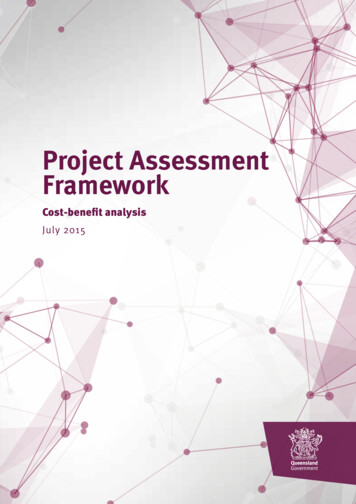
Transcription
Project AssessmentFrameworkCost-benefit analysisJuly 2015
Component of theProject Assessment Framework (PAF)This document forms part of the Project Assessment Framework, as outlined below.Overarching policy documentPolicy overviewGuidance materialStrategic assessment of service requirementPreliminary evaluationBusiness case developmentSupply strategy developmentSource supplier/s24 September 2014Establish service capabilityThe Honourable Tim Nicholls MPTreasurer and Minister for TradeGPO Box 611Brisbane Qld 4000Deliver serviceDear TreasurerBenefits realisationI am pleased to present the Annual Report 2013-14 and financial statementsfor Queensland Treasury and Trade.Supplementary guidance materialI certify that this Annual Report complies with: the prescribed requirements of the Financial Accountability Act 2009 andthe Financial and Performance Management Standard 2009, and the detailed requirements set out in the Annual report requirements forQueensland Government agencies.Cost-benefit analysisA checklist outlining the annual reporting requirements can be foundat www.treasury.qld.gov.au.Yours sincerelyAlliance establishment and managementRelated policy documentsMark GrayUnder TreasurerQueensland public private partnership supporting guidelinesGuidelines for the assessment of market-led proposals The State of Queensland (Queensland Treasury and Trade) 2014 The State of Queensland (Queensland Treasury) 2015Licence:This annual report is licensed by the State of Queensland (Queensland Treasury and Trade)Licence:under a Creative Commons Attribution (CC BY) 3.0 Australia licence.In essence, you are free to copy, communicate and adapt this annual report, as long as you attributethe work to the State of Queensland (Queensland Treasury and Trade).Thisdocument is licensed under a Creative Commons Attribution 3.0 Australia licence. To view a copy of this licence,To view a copy of this licence, visit /au.Attribution:Content from this annual report should be attributed to:Attribution:The State of Queensland (Queensland Treasury and Trade) Annual Report 2013-14.ISSN 1837-2848Content from the Project Assessment Framework should be attributed to:The Stateof Queensland(Queensland Treasury) Project Assessment Framework.Translatingand interpreting assistanceThe Queensland Government is committed to providing accessible services to Queenslanders fromTheQueenslandGovernmentsupportsandthe disseminationand exchange of information.all culturallyand linguisticallydiverse backgrounds.If youhaveencouragesdifficulty in understandingtheannual report, you can contact us on (07) 3035 3503 between 9 am and 5 pm, Monday to FridayHowever,copyrightprotectsthis anpublication.(except for publicholidays) andwe will arrangeinterpreter to communicate the report to you.The State of Queensland has no objection to this material being reproduced, made available online or electronicallybut only if it is recognised as the owner of the copyright and this material remains unaltered.
Contents1 Overview11.1 Purpose of cost-benefit analysis: value for money11.2 A pplication of the guidelines11.3 Cost-benefit analysis: roles and responsibilities21.4 More information22 Cost-benefit analysis in the overall project cycle22.1 Identify the outcome sought (Step 1)32.2 Develop the project and policy options (Step 2)32.2.1 Status quo32.2.2 Other options42.3 Undertake a preliminary evaluation of the options (Step 3)42.4 Evaluate project options in detail (Step 4)52.4.1 T he importance of discounting, isolating projectimpacts and sensitivity analysis62.4.2 Isolating the impacts of a project72.4.3 Testing for sensitivity to alternative assumptions72.4.4 Risk analysis72.4.5 Financial analysis112.4.6 Cost-benefit analysis122.4.7 Cost-effectiveness analysis142.4.8 Environmental and social costs and benefits142.4.9 E conomic impact analysis162.4.10 Budget analysis162.4.11 Regulatory analysis162.5 Select preferred option (step 5)172.5.1 C ost-benefit analysis conclusion,recommendations and checklist17Appendix A – Cost-benefit analysis sample formats19Appendix B – C ommon cost-benefit techniques25Appendix C – R eferences31
1OverviewThe Cost-benefit analysis guidelines, released assupplementary guidance material available under theProject Assessment Framework (PAF), provide practicalguidance regarding the range of issues to consider whenconducting a financial and economic analysis of projectoptions at either the Preliminary evaluation or Businesscase development stages of theproject lifecycle.Agencies should refer to the PAF Policy Overview for furtherinformation about the PAF’s application and the roles andresponsibilities that may apply.1.1 Purpose of costbenefit analysis:value for moneyThe Government provides services to the community in anincreasingly complex and challenging fiscal and economicenvironment. In order to provide the highest qualityoutcomes, the Government seeks to optimise value formoney in its use of resources.The Government’s decision makers, primarily Cabinet, theCabinet Budget Review Committee (CBRC) and the Ministersand Chief Executive Officers of Departments, requireconsistent, transparent and accurate information to: align agencies’ policies, projects, programs andactivities to the Government’s stated priorities prioritise individual projects within programs ensure that their project procurement and resourceallocation decisions achieve maximum value for moneybenefit for the State.Rigorous and robust project evaluation will materially helpin delivering on these requirements. In this context, thepurpose of the Cost-benefit analysis guidelines is to assistanalysts, across the whole of the Queensland Government,by providing:1.2 Application of theguidelinesThe Cost-benefit analysis guidelines have broad applicationto a range of project types, including: information,communication and technology (ICT); policy development;business change; and construction projects. While thespecific application of these guidelines is a matter for eachagency’s Chief Executive Officer, agencies are encouragedto adopt the guidelines as appropriate for projects underconsideration.These guidelines may be used as the benchmark againstwhich the Treasurer, Cabinet and CBRC measure thequality, appropriateness and robustness of informationprovided by agencies on projects under consideration bythe Government. Adherence to the Cost-benefit analysisguidelines will assist agencies in this process.However, in the case of small projects, the resourcesrequired to undertake a full cost benefit analysis (refer tosection 2) may be disproportionate to the cost of the projectand difficult to justify in the context of the net benefitsexpected to accrue from project implementation.Depending on the circumstances, the scope of a projectassessment could comprise: broad financial and economic analyses a standard methodology and approach for cost-benefitanalysis comprehensive financial and a broad economic analysis a guide to undertaking the analysis.Agencies should determine on a case-by-case basis thelevel of analysis required for the particular project havingregard to the scope, cost, complexity, level of risk andsensitivity of the project. Assessments and the resourcesallocated should be proportionate to the size and nature ofthe project. comprehensive financial and economic analyses.1
1.3 Cost-benefitanalysis: roles andresponsibilitiesIn preparing an evaluation, the roles and responsibilities ofthe various contributors need to be well defined and clearlyunderstood. Refer to the PAF Policy Overview documentfor further information about roles and responsibilitiesregarding the application of the PAF.Sufficient resources should be allocated by agencies toundertake the work required in evaluating options. In thisregard, the resources allocated to an evaluation should becommensurate with the size and likely impact of the projectbeing evaluated.1.4 More informationIn addition to the Cost-benefit analysis guidelines, thereare many publications which may be useful for agenciesundertaking a project evaluation. The first step in theprocess should be the PAF. Details of some of the otherpublications are contained in Appendix C.These additional guidelines comprise a valuable technicalresource complementary to the Cost-benefit analysis guidelines.2Cost-benefitanalysis in theoverall project cycleThe Cost-benefit analysis guidelines are designed primarilyto support the evaluation of options and can be used in thePreliminary evaluation and the Business case developmentstages of the project lifecycle.While the primary application of the Cost-benefit analysisguidelines occurs early in the project life cycle, theresulting evaluation (particularly in relation to the selectedoption) should be regularly confirmed throughout the lifeof the project. This is essential to enable project decisionmakers to assess the ongoing viability of the projectthroughout its life.To be complete and effective, cost-benefit analysis should: follow the process outlined in the PAF contain concise and relevant information on which tobase a decision about whether or not to implement theproject use well defined and consistent terminology include appropriate self-contained quantitative andqualitative analyses of financial, economic and socialrisks and impacts, along with any other identified risks/impacts associated with the project state the assumptions on which of the analyses arebased, as well as the basis for those assumptions specify clearly referenced data sources for validationpurposes indicate clearly the range of assumptions used insensitivity testing of options provide detailed, clear and logical arguments tosubstantiate any conclusions and recommendations.While all cost-benefit analyses have these commoncharacteristics, the level of analysis required will differdepending on the project’s complexity, risk profileand sensitivity and the level of financial and economicresources required to implement the project.The decision making process for the application of theseCost-benefit analysis guidelines are listed in Table 1 and areoutlined in greater detail in the following sub-sections ofthis document.2
Table 1: Five steps in delivering a cost-benefit analysisStep 1Identify the outcome soughtRefer to the Strategic assessment of service requirementguidance material of the PAFStep 2Develop project and policy optionsRefer to the Strategic assessment of service requirementguidance material of the PAFStep 3Undertake a preliminary evaluation of optionsRefer to the Preliminary evaluation guidance material of the PAFStep 4Evaluate project options in detailRefer to the Business case development guidance materialof the PAFStep 5Select preferred optionRefer to the Business case development guidance materialof the PAF2.1 Identify the outcomesought (Step 1)To commence a cost-benefit analysis, it is essential toclarify the following: what outcome is the Government seeking from theproject? why does the Government need to be involved inachieving this objective?This initial process identifies the outcome sought for aproject, and validates it as a government priority. Theproject is the means of addressing the outcome sought.Government intervention or activity is justifiable on twofundamental grounds – efficiency and equity: efficiency — the existence and operation of private sectormarkets normally comprise the efficient process bywhich goods and services are produced, distributed andconsumed. Government can intervene in a marketplaceeither by regulating behaviour or by investing in a projectwhich creates infrastructure or services.Such government action should be reserved for thoseinstances where markets are failing to deliver efficientoutcomes. Market failures usually fit into the followingcategories:——the exercise of market power through limitedcompetition——the non-existence of markets for public goods——market prices or input costs which do not incorporatethe complete costs or benefits of the relevant activity,resulting in externalities——information failures such as asymmetric informationoccur if consumers cannot obtain adequateinformation on which to base their decisions to buyand consume. equity – government may intervene on equity ordistributional grounds. The outcome sought shouldclearly state the nature of the inequity to be redressed,its extent and the reasons for its occurring.However, government intervention is not costless.Therefore, intervention is justified only where the netbenefits (benefits of avoided market failure net of the costsof government failure, including the deadweight costs oftaxation) of government activity are positive.To assist with the future evaluation of outcomes, newperformance indicators and targets need to be formulated,or the impact on the agency’s existing performanceindicators and targets need to be established. Theseperformance indicators, targets and the proposedmethodology of measurement should be set out clearly (apro forma is provided in Appendix A).Guidance material relating to the Strategic assessment ofservice requirement stage of the project lifecycle providesfurther information on identifying the outcome sought bya particular project. Additional documents and guidelinesthat will assist in this step are identified in Appendix A.2.2 Develop the projectand policy options(Step 2)Having clearly defined the outcome sought, the next stepis to develop in detail a range of solutions (project options)that have the potential to achieve the outcome.Guidance material relating to the Strategic assessment ofservice requirement stage of the project lifecycle providesfurther information to support the identification of a broadrange of project options.The option analysis is not a risk analysis, but the processof developing options may usefully bring up high levelidentification of risks. For information on risk analysis,which is a critical part of the cost-benefit analysis process(refer to section 2.4 Evaluate project options in detail (Step4)). This step should produce a clear statement describingthe detailed options, including a rationale for each optionassessed against the project’s objectives.2.2.1 STATUS QUOAnalysis of the status quo is essential, as it is thebenchmark against which all other options should becompared. Consequently, it is important that the status quois carefully specified and modelled on a whole-of-life basis.It is, quite simply, a description of what will occur shouldthe proposed project not proceed.3
The status quo is not (usually) a “spend nothing” or a “donothing” scenario, as it will reflect any essential changesresulting from changes in demand or regulations. When aservice is already provided, the status quo needs to showthe impact of continuing the existing situation, with all theassociated costs and benefits.It is important that the status quo is not used as a “dummy”option. That is, one which is presented to make the“preferred” option look attractive. Decision makers need tobe advised of what situation will exist in the absence of theproject being approved. The status quo may indeed proveto be a viable alternative based on affordability or value formoney considerations.2.2.2 OTHER OPTIONSThe status quo and all potentially viable options (typicallymore than one practical alternatives would exist) should beanalysed in detail. As noted above, the status quo shouldbe presented as accurately as possible and be consideredas a potentially viable option.To further assist agencies with the development ofinnovative options, the Western Australian Treasury’sStrategic Asset Management Framework identifies thefollowing questions that may be useful: Are different sizes or quality of operation possible (e.g.could the operation be scaled down, or is assetreplacement justified)? What is the sensitivity of demand to the level andstructure of pricing? Is varying the pricing structure a realistic alternative toincreased expenditure? What is the effect of varying the design life or timing ofthe scheme? Could the operation be contracted out? What alternative locations are available? Are there choices of technique involving a trade-offbetween labour and capital, or capital andmaintenance costs? Are there different materials, which would cost less orneed less maintenance? Would better training of staff reduce manpowerrequirements? Are all elements of the operation equally justified? Would removing some of them increase the net presentvalue? Could the operation be combined with another or dividedinto parts to advantage?Developing options involves lateral thinking about theoutcome being sought and a clear understanding about theobjectives and outcomes of the project.2.3 Undertakea preliminaryevaluation of theoptions (Step 3)Having identified in Develop the project and policy options(step 2) a range of options assessed (technically) ashaving the potential to deliver the outcome sought, itis necessary to undertake appropriately detailed risk,financial, economic (including social and environmental),and budget analyses of each of the options. Such analysesshould facilitate an initial ranking of alternative optionsin terms of cost and risk and their ability to meet theidentified outcome sought (refer to section 2.1. Identify theoutcome sought (Step 1)). The preliminary evaluation willenable decision makers to determine if action to achievean outcome that is consistent with government priorities isjustified, given the likely resourcing requirements or otherimplications of identified options to achieve the outcome.It is appropriate to limit the assessment to a preliminaryanalysis at this stage. Undertaking a detailed evaluationof project options (refer to section 2.4 Evaluate projectoptions in detail (Step 4)) for a relatively small, simple andlow risk project could involve significant costs. Similarly,for projects that are of significant scale, are complex orhigh risk, it is appropriate to undertake an initial, lowercost assessment to determine if the costs associated witha detailed evaluation of project options (refer to section 2.4Evaluate project options in detail (Step 4)) are justified.The level of analysis should recognise the size, complexityand risk of a project, and whether a business case will beundertaken.If a project is deemed to be a priority and affordable, itwill proceed to Step 4: Evaluate project options in detail.However, if the project is sufficiently small, simple and lowrisk to not require detailed assessment, the project wouldskip Step 4 and move to Step 5: Select preferred option.It is important to note for any analysis, that there is no clearway to explain the difference between what constitutespreliminary or detailed analysis. However, when developinga scoping paper or estimates for preliminary analysis thePAF suggests some level of statistical confidence in guidingthe level of detail.In addition, it should be assumed that more detailedinformation is required for the business case. As a result,agencies should ensure that estimates used in the earlierstages of evaluation are not accepted without rigorous reevaluation at each stage of the project’s progress. Doubtsabout the reliability of estimates of key variables can bereflected in the sensitivity analysis, or variables could bereported using a range to reflect their uncertainty (refer tosection 2.4. Evaluate project options in detail (Step4)).4
2.4 Evaluate project options in detail (Step 4)Having undertaken a preliminary assessment of a range of options, it is necessary to undertake more detailed risk, financial,economic, budget, social and environmental analyses of each of the options. Such analyses should facilitate a ranking ofalternative options in terms of both costs and risks and their comparative ability to meet the outcome sought. Key elementsof the process are outlined in Table 2.It should be noted that while the analyses contained in a cost-benefit analysis can be prepared sequentially, they areinterrelated and it will be necessary to return to earlier analyses in order to make adjustments for information that becomesapparent throughout the process.These analyses are brought together in the form of a business case to allow a decision on whether the project should beundertaken and, if so, which option represents best value for money.Table 2: Key analyses in a cost-benefit analysisAnalysisDescriptionRiskA risk analysis should identify, document and analyse the risks involved with each project option,and outline the strategies for allocating and mitigating risks associated with implementing eachoption.FinancialA financial analysis, conducted on a cash basis, determines (from the government’s perspective)whether projected revenues will be sufficient to cover cost, including an appropriate return onthe capital invested. Where a project does not generate a revenue stream, or the revenue isinadequate to cover all the costs, the financial analysis will show a least cost / net cost option.A cost-benefit analysis involves a comprehensive economic evaluation of all the costs and benefitsassociated with each proposed project option, including financial, environmental and social. Theobjective is to determine the most economic use of resources. Costs and benefits are valued indollar terms and adjusted for market distortions or imputed where the market does not exist.Identifying the costs and benefits associated with social impacts in areas such as education,health, family services, crime, sport, art and culture or community services is an input to a costbenefit analysis.Identifying the costs and benefits associated with the impacts the project options may have on:Cost-benefit including: air, water, or soil quality noise levels within a community financial social environmental biodiversity townscape or heritage recreational or forestry areas the State’s natural capital and primary resources.Cost effectiveness analysis, an alternative to cost-benefit analysis, is used where benefits can beidentified but it is impracticable to place a monetary value on a major proportion of them. Benefitsare expressed in physical units such as number of species saved. Costs are measured in dollarterms and, as in cost-benefit analysis, are adjusted for market distortions or imputed where themarket does not exist. Project options are compared in terms of their relative effectiveness and theirrelative costs. While a cost effectiveness analysis will facilitate identification of a least cost option,it will not show whether benefits outweigh costs.BudgetA budget analysis, conducted on an accruals basis, provides detailed information on revenuesand other funding sources and expenses to show the estimated impact on agencies’ budgets.RegulatoryThere will be instances where analyses undertaken in accordance with these guidelines will relateto proposals which include one or more options which have the potential to regulate economic orother activity in the community. Potential regulatory impacts should be identified and addressedthrough the development of a Regulatory Impact Statement (RIS).5
2.4.1 THE IMPORTANCEOF DISCOUNTING,ISOLATING PROJECTIMPACTS ANDSENSITIVIT Y ANALYSISCost-benefit analysis involves comparing projects andproject options with different flows of financial or economiccosts and benefits occurring in different time periods.Discounting recognises that the use of money has a value.A dollar today is worth more than a dollar in five years’ time.This concept is known as the time value of money.The time value of money means that cash inflows andoutflows occurring in different time periods cannot simplybe added together to determine the overall net cost or netbenefit of a project. It is necessary to remove the effectof the time value of money (i.e. discount back) to enableall values to be compared equally (i.e. the present value).Different projects and project options have different marketrisk profiles. In this regard, a future revenue or benefitstream which may be highly risky should not be valued ashighly as an alternative, less risky, stream with the samenominal value. A higher discount rate for the riskier benefitstream would be appropriate.In the above manner, a single unit measure of net benefitor net cost is derived to enable meaningful comparison ofoptions to be made.The process of discounting future financial cash flows (oreconomic costs and benefits) of a project is used to derivekey decision indicators such as net present value (NPV), netpresent cost (NPC) or benefit-cost ratio.The discounting factor, known as the discount rate,comprises two components: a component to adjust periodic cash flows for the timevalue of money (the risk free rate) a component to reflect the fact that investors need to becompensated not only for the time value of money, butalso for taking on “economy-wide” or “market” risk byinvesting in the project (the systematic risk premium).Cost-benefit analysis requires familiarity with discountingand capital budgeting techniques. Some of the issues to beconsidered include: Whether to use nominal (includes inflation) or real values(excludes inflation)1. A key concern is that consistencyis ensured. For example, if nominal values are used,a nominal discount rate must be used. This producesthe same answer as applying a real discount rate toreal values in the analysis, assuming that adjustmentsfor inflation are consistent. Agencies should carefullyconsider and fully explain their rationale for their choiceof nominal or real values.1 For ease of understanding, financial analyses aretypically undertaken in nominal terms (given thatprices observed in the marketplace are nominal valuesthat is, in dollars of the day). However, there may be arationale for using real values in cost-benefit analysis.For example, it can be easier and more intuitive to usereal values if the analysis needs to concentrate onphysical volumes (e.g. tonnes of material transported) asdifferences in these volumes can be confused if nominalvalues are used. How values are estimated. Revenues and costs shouldbe expressed in expected value terms. To determine theexpected value, each (reasonably) expected outcome isidentified, and a value and the probability of occurrenceof that value are attributed to that outcome. Theexpected value is then the sum of each value outcomemultiplied by the probability of its occurrence. Forexample, if there are four reasonably expected outcomes,the expected value outcome would be the sum offour products of the value of each outcome and theprobability of its occurrence. Assessment of the expectedvalue should consider project-specific risks. Systematicrisks are accommodated through the use of a riskadjusted discount rate. Timing of benefits and costs. This refers to thechoice of whether periodic benefits and costs occurat the beginning, during or at the end of the period.Assumptions made about such timings can make adifference to the NPV. Residual values. A cost-benefit analysis will incorporateanalysis covering a discrete period of time, even thoughin practice the benefits of the project may continuefor many years beyond the period of analysis. While,in theory, these long run benefits (and costs) shouldbe included in the analysis, it can be problematic andin most cases impracticable to estimate them (as anextreme example, in some parts of Europe, Romanroads are still being used – more pertinent to today,benefits from training and education can persist acrossgenerations).However, to ignore future long-term benefits and costs canunderstate the project’s net present benefit or NPC (notingthat discounting values back over long timeframes yieldssmall present values). Accordingly, the project can beassigned a residual value at the end of the analysis period,which represents an estimate of the residual long runbenefits (and costs). Where the project is a significant pieceof infrastructure (e.g. a building) the residual value wouldbe its estimated market value at the end of the analysisperiod, which could be positive or negative depending onwhether the asset could be sold or if there were significantcosts associated with decommissioning. Determiningresidual values in other cases (e.g. a new service) can be farmore problematic. As the NPV will vary with the choice ofresidual value, this choice must be determined carefully.T he consumer price index (CPI) is generally considered to be a representative indication of general price inflation. Agencies should consult with QT regardingchoice of inflation rates.6
2.4.2 ISOLATINGTHE IMPACTS OFA PROJECTFor both the financial analysis and the cost-benefit analysisof a project, costs and benefits (or revenues) to be includedshould comprise only those which are a result of theproject. The costs and benefits for each project optionshould be measured against those which occur in thestatus quo.Care needs to be taken in defining the scope of the costsand benefits to be included in the project to ensure thatthere are no omissions or double counting when comparingthe project against the status quo. This considerationis relevant whether the analysis concentrates only onincremental costs and benefits, or assesses total costs andbenefits.If the assessment is being undertaken on an incrementalbasis, only costs and benefits incremental to continuingwith the status quo would be included. The incrementalnet benefit or net cost is compared with a zero base, asthe benefits and costs of the status quo have already beenaccounted for in estimating the incremental benefits andcosts.If the assessment is being undertaken on a total costbenefit basis, all costs and benefits associated with theproject would be included. The total costs and benefits forthe project are then compared to the total costs and benefitsunder the status quo.While the two approaches sh
2.4.4 Risk analysis 7 2.4.5 Financial analysis 11 2.4.6 Cost-benefit analysis 12 2.4.7 Cost-effectiveness analysis 14 2.4.8 Environmental and social costs and benefits 14 2.4.9 Economic impact analysis 16 2.4.10 Budget analysis 16 2.4.11 Regulatory analysis 16 2.5 Select preferred option (step 5) 17 2.5.1 Cost-benefit analysis conclusion,




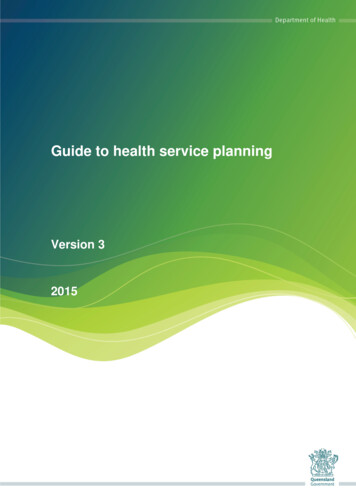
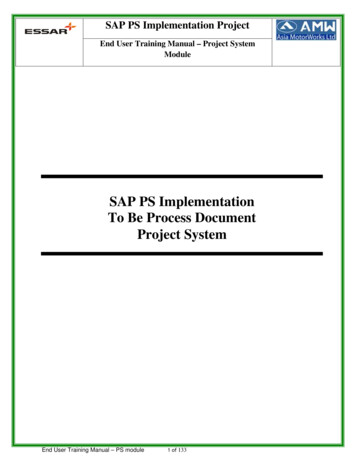
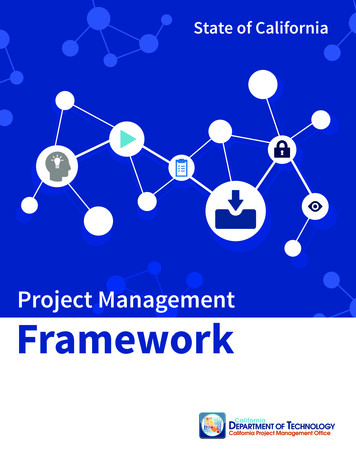
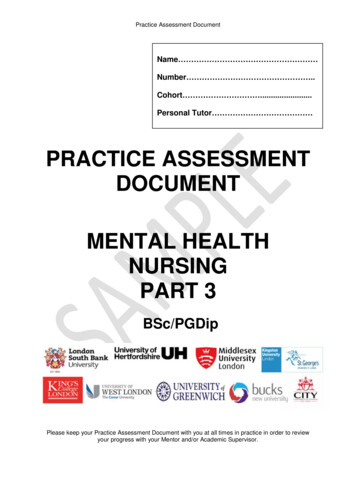
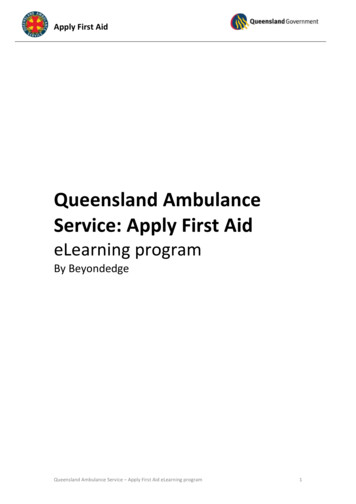
![Clinical Biostatistics [CLB]](/img/6/study-guide-clb-2021.jpg)
